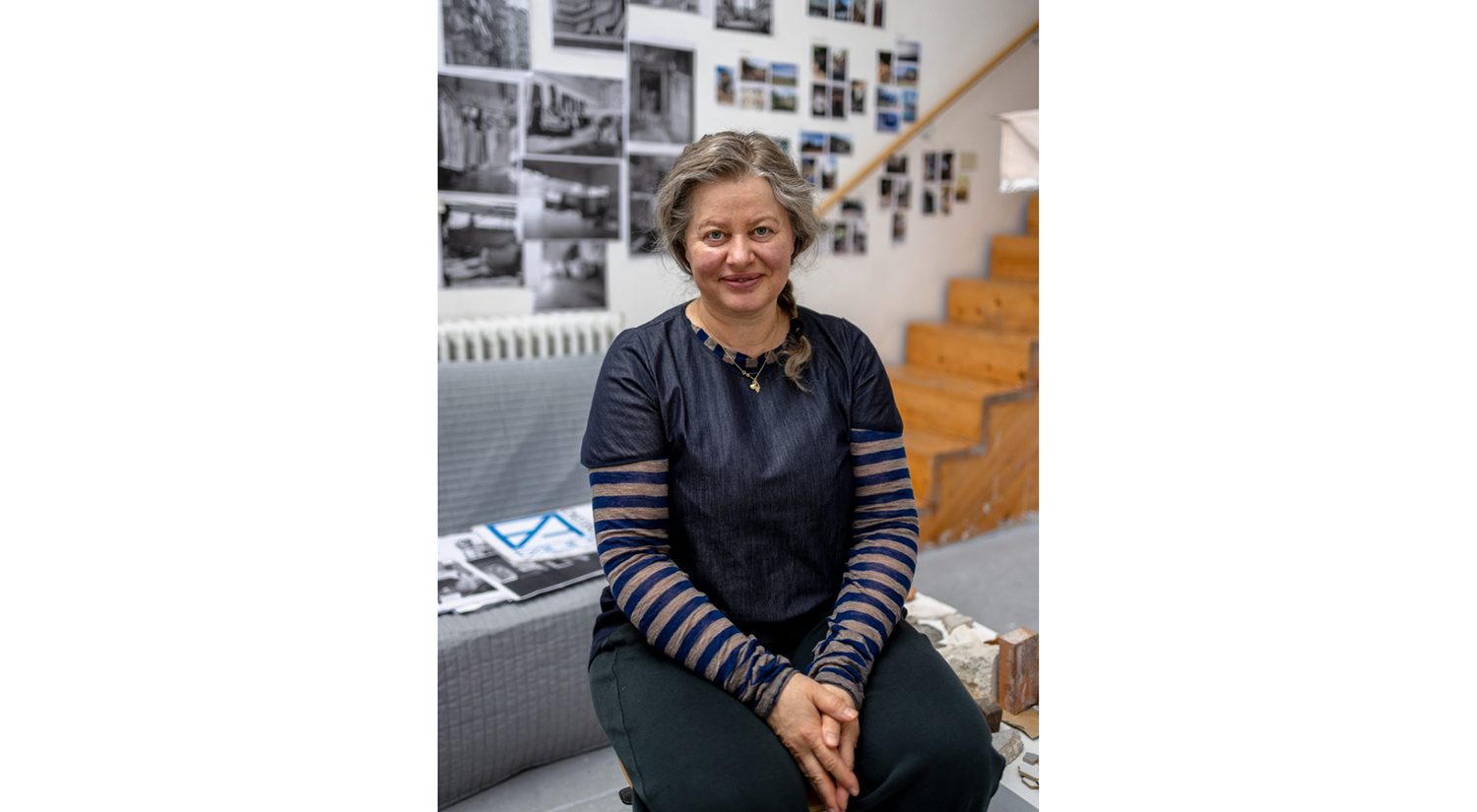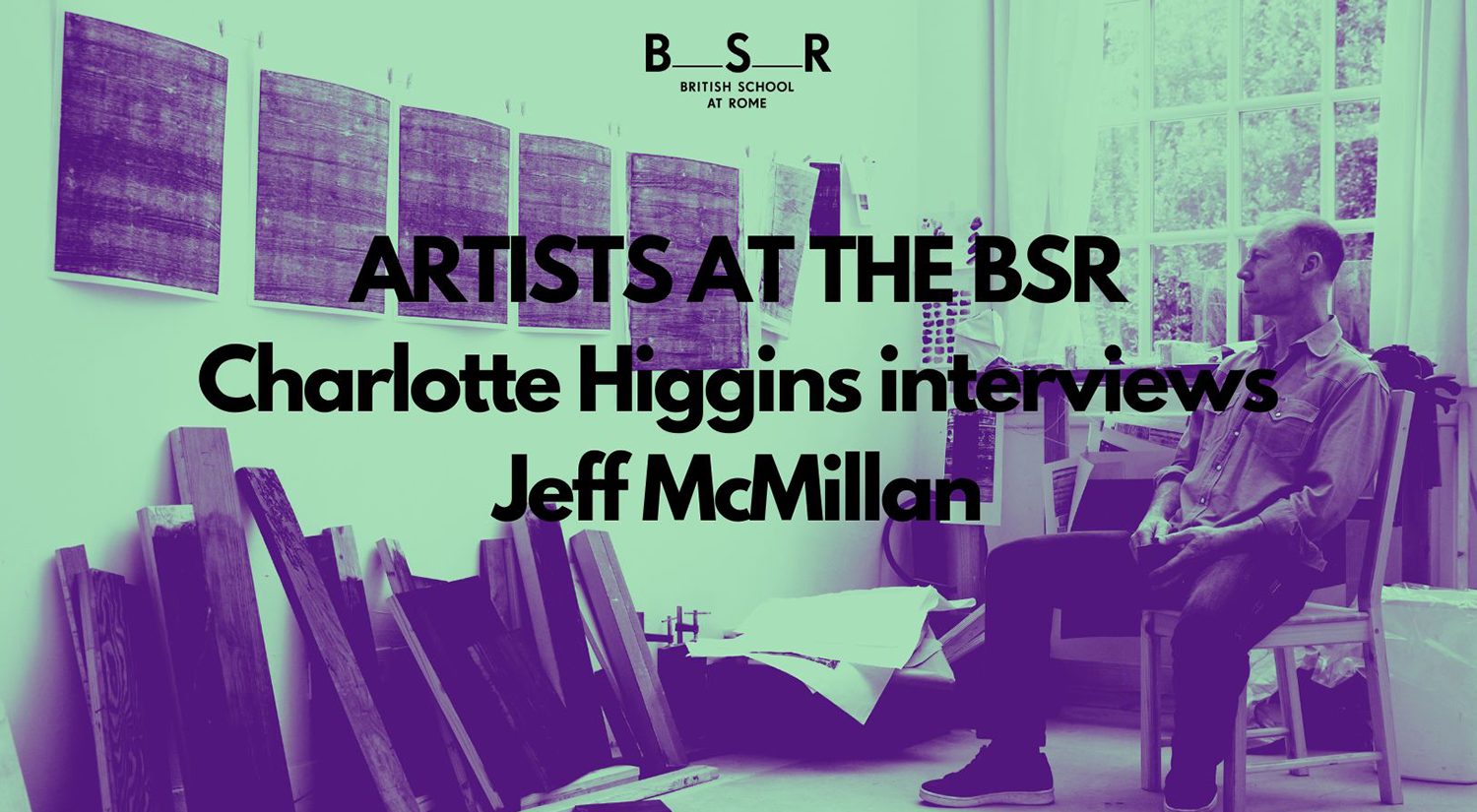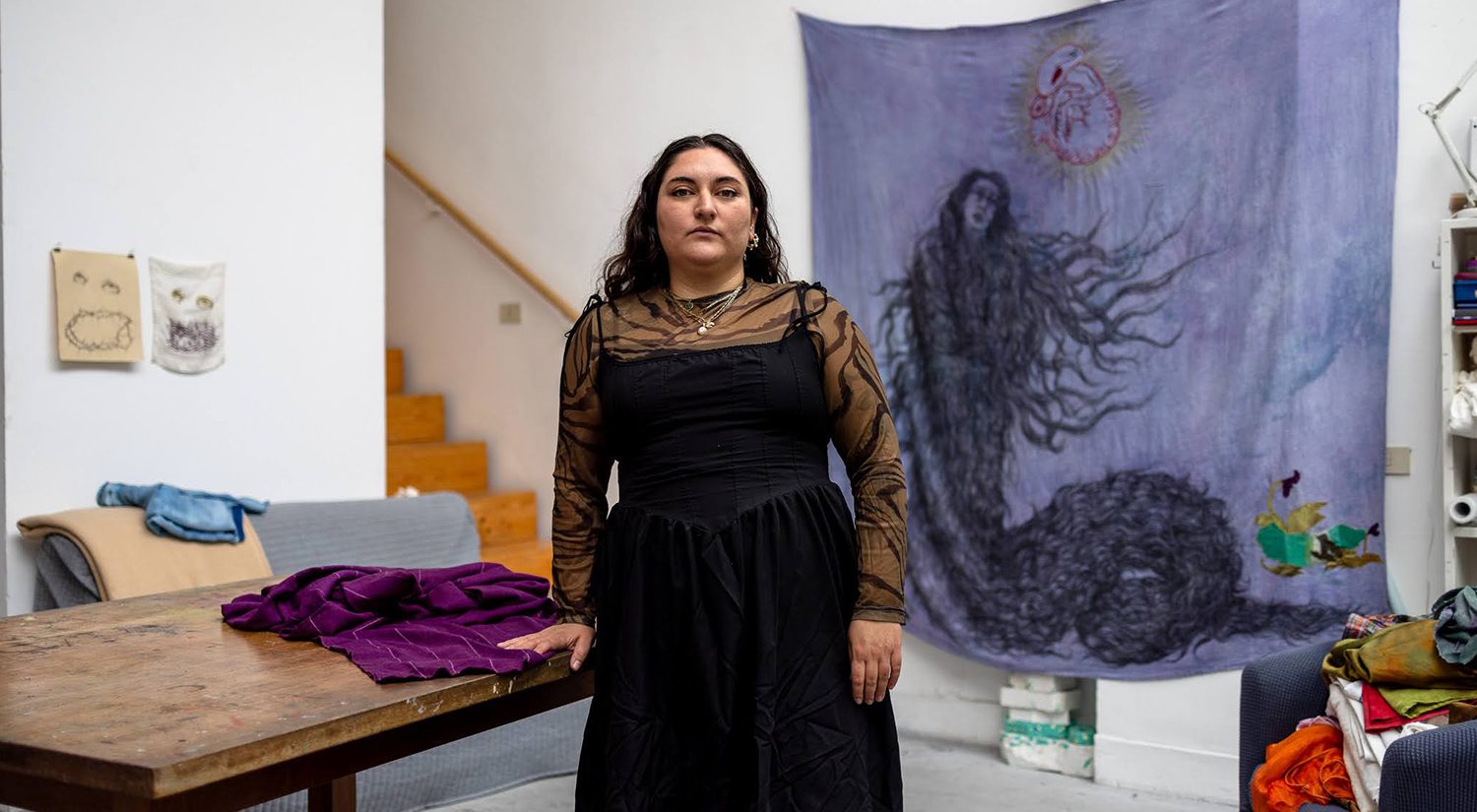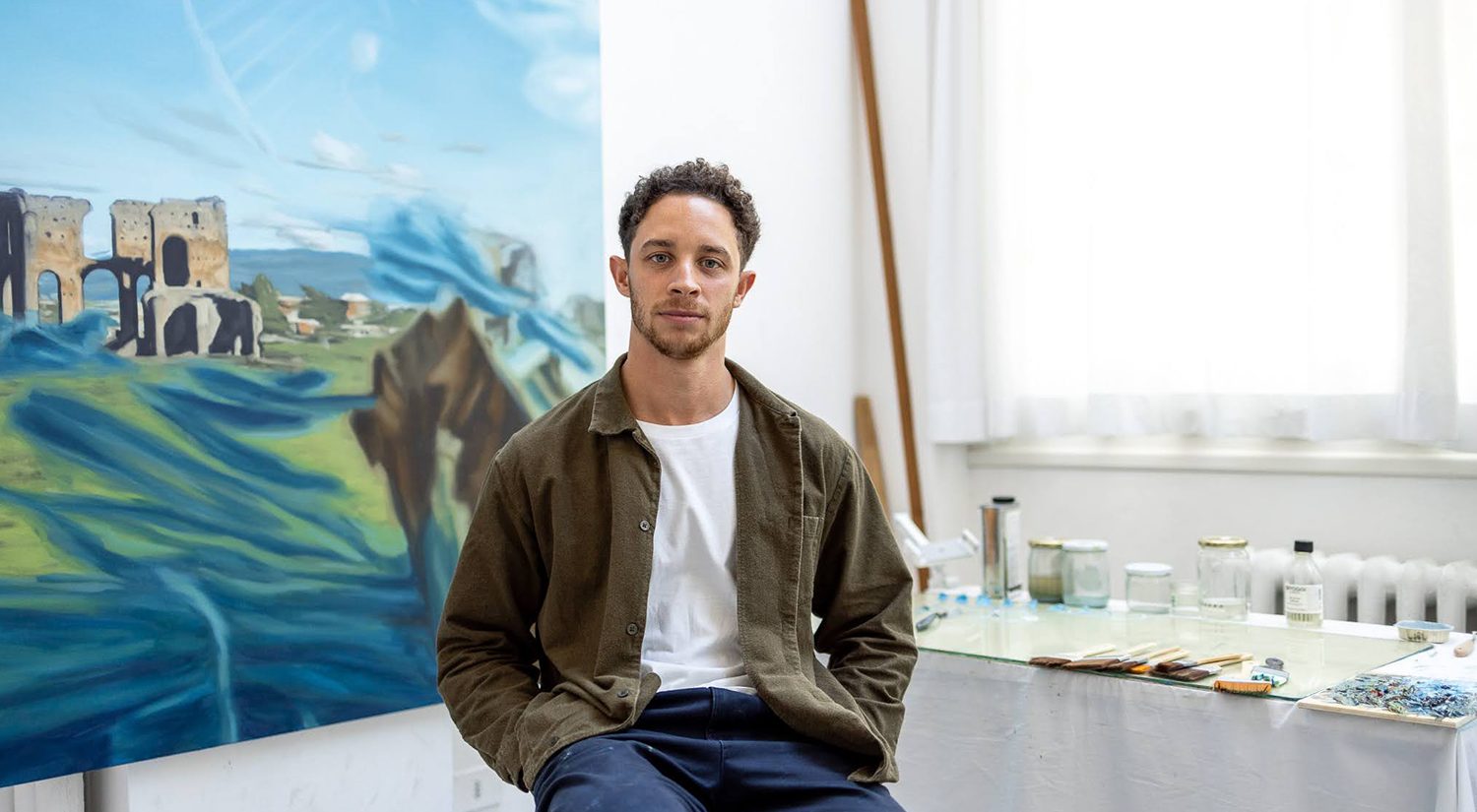An interview with Kerstin Kartscher, Bridget Riley Fellow, in which she speaks about the work she has produced during her residency at the BSR from December 2023 to March 2024, ahead of the Spring Open Studios.
In Rome you are developing an important aspect of your research: space of recreation and shelters. Could you tell us more and could you let us know what spaces you have visited so far?
When I came to Rome in September last year my research was focused on recreational spaces. One aspect I was especially interested in was spaces changed by the creative input of local groups of people for the recreation of many. These are initiatives that protect green spaces, put on cultural programs, or offer help for immigrants and activities for children to improve their lives in their communities. To begin with, I was researching three projects: the CSOA Acrobax, Comitato per il Parco della Caffarella and the anonymous painters/pittori anonimi in Trullo. I had no idea how many similar places there were and the more I looked the longer my list of places got. I found out that most of the initiatives and cultural community centres in Rome are run by volunteers and are basically squats, illegal occupations of empty abandoned buildings. Rome has one of the biggest squat scenes in Europe, addressing a lack of cultural and social care by the state, alongside immigration and housing problems. I then visited CSOA ExSNIA, CSOA Forte Prenestino, Villaggio Globale, CSOA Spartaco and most recently Spin time labs. This is a huge abandoned office building that was taken over in October 2013, in an exclusive central location. They believe that the right to housing is sacrosanct.
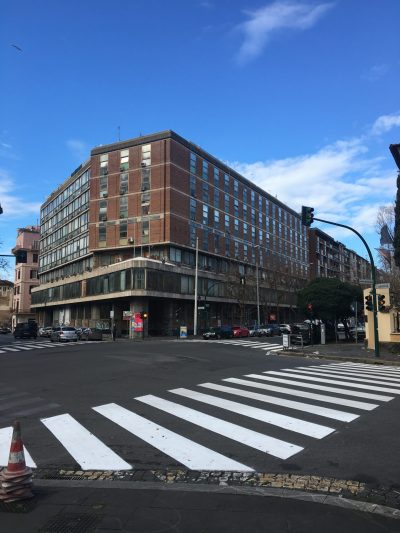
The initiative ‘action’ and later spin time labs started a variety of cooperative institutions and services to create an alternative community based on these three pillars: Circular economy, Common good and Urban regeneration. It houses the Scomodo magazine redactione/redaction, social service centre, afternoon school, woodworking, theatre, hairdresser, seamstress, library, bar and more. Surprisingly an official medical screening service moved in too. It is also home to 450 people, including 200 families, most of them immigrants. Unusual for squats, they also house a large number of elderly people, who’s pensions do not cover the high rent and cost of living in Rome. Cardinal Krajewski who has an official role in this area helped when the electricity was switched off as the 450 residents depended on it.
Occupied buildings are common in Rome and tolerated by the authorities until they are not. They play a very important role in the cultural life of Romans and are a place for young people to meet. Only a few places I visited are able to provide urgent housing, but all of these initiatives are trying to improve their community and beyond. They care not only about local needs, but also engage with wider social and political issues. But the political changes in Rome alongside evictions are threatening these places more than ever.
In recent weeks you are focusing on very common domestic objects such as awnings and clothes lines. Could you tell us why this interests you and what we will see at the Open Studios in March?
While visiting the MAAM, an experimental squat which houses 200 people, including 62 families, in between donated installations and graffiti art works (a kind of lived-in museum), I did not see many adults, but quite a few children.
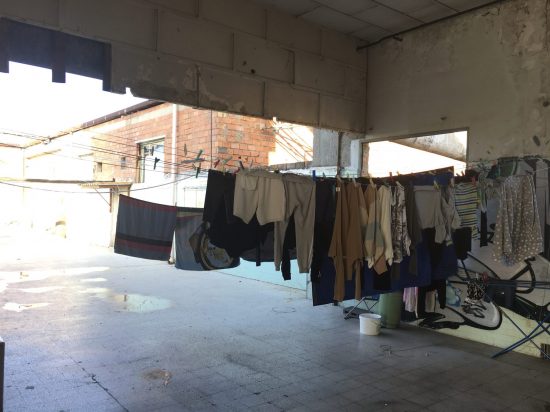
You are aware of the people living there because of the many clothes drying racks and washing lines all over the whole complex. Although living quarters are very basic and seem to be built without any money, the sight of hung-out washing gave a sense of dignity and orderly domesticity to the whole area. The sign of washing makes you believe that people do care about their families very strongly and aspire and strive for a quality life for themselves and their children.
In my new installation for the Mostra and Open Studios at the BSR, these washing lines come together with the flat sun shelter awnings I saw in Naples, where whole streets disappear behind awning fabric.
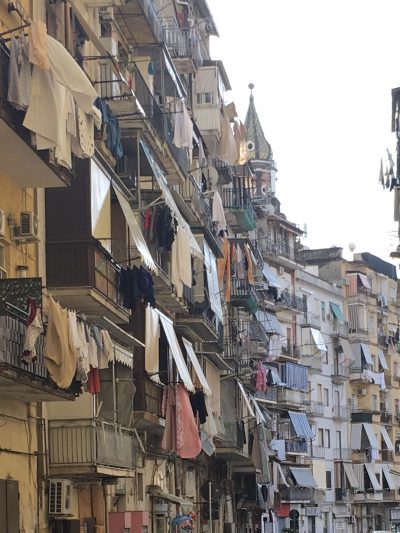
I have used these awnings in drawings as I like how they ignore the facade of a building and make a new fragmented one. I have worked with awnings in the form of shelters since 2005. They refer to the basic human need of having a roof over one’s head, a place of care. For example an early work “Private war”, 2005, an installation I made for Tate St Ives is an assemblage of several types of spaces of care: From Field hospital, to pop-up medical research tent, from Sanatorium to Spa. Awnings interest me because they are moveable, flexible structures which can be occupied temporarily and personalised for a moment by the public or the passer-by. They shelter and protect from the elements. They are a form of care.
In my work the journey from the source material to the finished work takes the form of an open-ended walk, until the image is finally welded together. Such “walks” both real and in my mind, are at the centre of my work as an artist, contributing both materials and mental geography. Here in Rome I mapped out the city and the squats and the cultural places I visited.

I made this explosive ink wall drawing of Rome locating the cultural community squats within it which is protected behind an awning. The stone collection which I started early on in October 2023 is a physical and mental geography as I picked up stones on the street near sites and places I have been to. They are not precious or ancient stones, for example there are stones from the parking lot at the BSR and Via Gramsci between stones from the Musica bridge’s provisional skatepark or streets at the EUR.
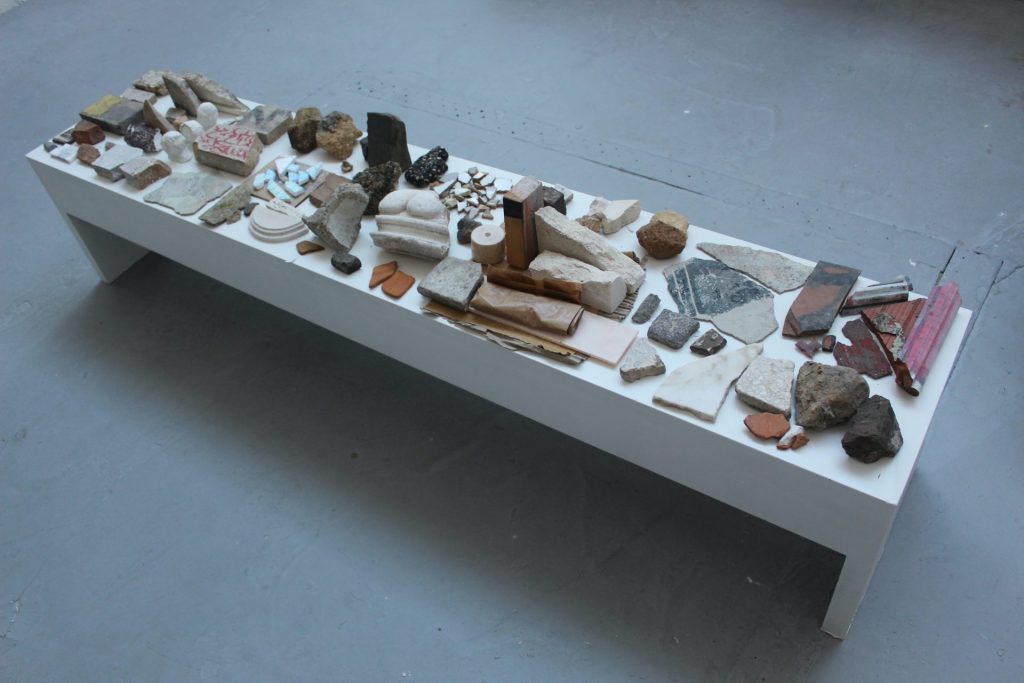
My main body of work is based on drawings. The drawings are mostly done in ink on paper, sometimes combined with made or found objects presented in installations. In my work l offer inspiring places not owned or ruled, landscapes with multi-perspective-horizons and fragments of architecture.
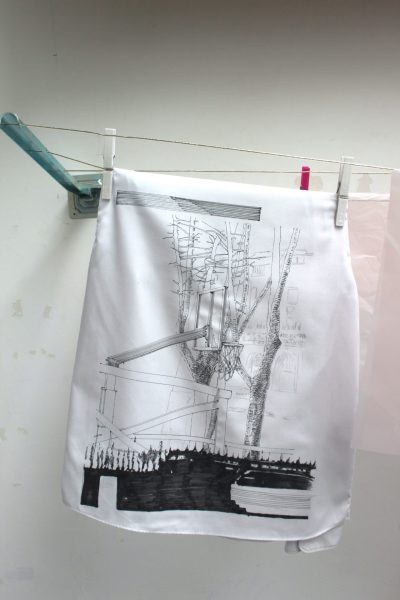
The drawings within the installation I’m currently working on, take up aspects of the different squats, their internal experiences and what they mean to the people of Rome. The awnings in my new installation are protecting the initiatives while the initiatives protect themselves by becoming invaluable for their communities. I’m in awe of the incredible work these people do and I’m drawn to their commitment of care. This is a big part of what I’m trying to capture in my work.


